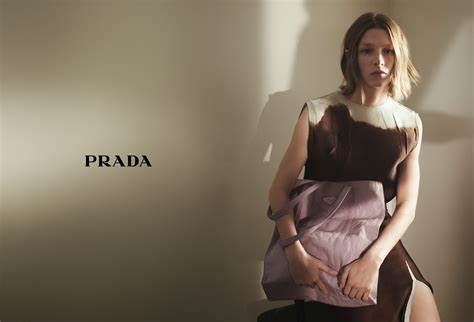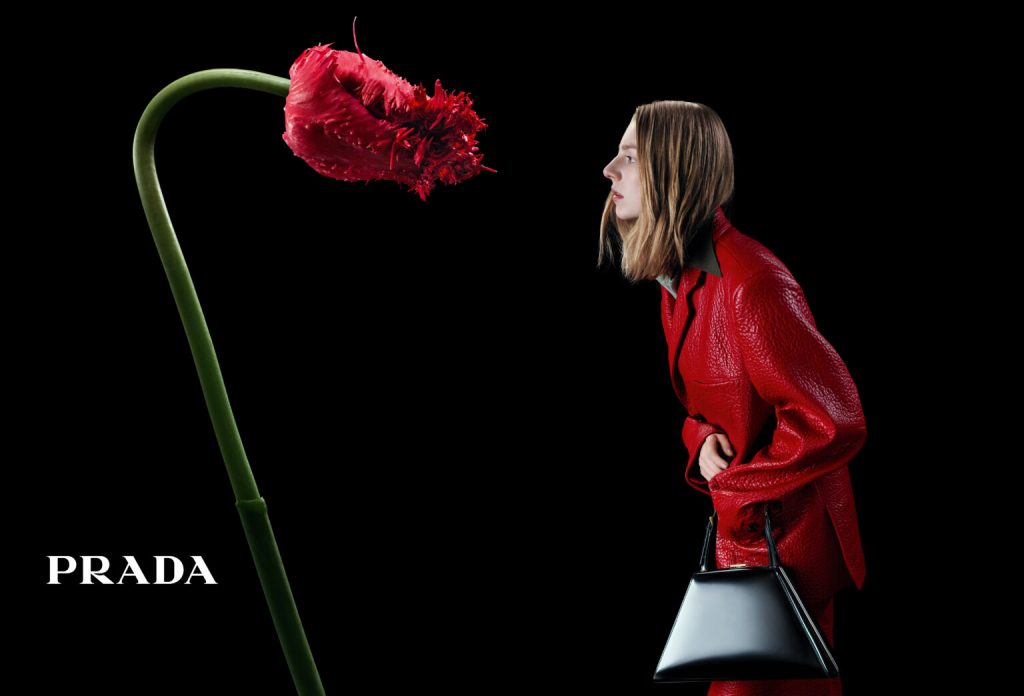Prada, a name synonymous with luxury, innovation, and a forward-thinking approach to fashion, stands as a pillar in the global fashion industry. Founded in 1913 by Mario Prada, this Italian luxury house has evolved from a leather goods company to one of the most prestigious and influential fashion brands in the world. This essay explores Prada’s journey, its contribution to the fashion landscape, and the unique blend of tradition and innovation that defines its identity.

The Humble Beginnings
Prada’s story began in Milan, Italy, when Mario Prada opened a leather goods shop, specializing in handbags, steamer trunks, and imported English steamer trunks and handbags. Despite its initial focus on leather goods, Prada’s commitment to quality and craftsmanship set the foundation for its future as a fashion powerhouse.

Transition to Fashion
The transformation of Prada into a fashion brand is largely credited to Miuccia Prada, the granddaughter of Mario Prada, who took over the company in 1978. With a Ph.D. in political science and an unconventional approach to fashion, Miuccia Prada steered the brand into new directions, introducing a line of backpacks and totes made from Pocono nylon, which became instant hits.
Innovation Meets Tradition
Under Miuccia’s leadership, Prada became known for its understated, clean lines, and luxurious fabrics, challenging the ostentatious fashion trends of the 1980s. The launch of the women’s ready-to-wear collection in 1989 further established Prada as a brand that merges innovation with classic style, a philosophy that continues to guide its designs.
Expansion and Diversification
The 1990s and 2000s saw Prada’s rapid expansion into menswear, sportswear (Prada Sport), and a range of other luxury goods, including eyewear and fragrances. The acquisition of other luxury brands such as Fendi (later sold), Jil Sander, and Church’s shoes underlined Prada’s ambition to create a luxury conglomerate, though it later refocused on its core brand.
Prada’s Influence on Fashion
Prada’s impact on the fashion industry is immeasurable. The brand has been at the forefront of setting trends, from its minimalist approach in the 1990s to its innovative use of fabrics and technology. Prada has also been a pioneer in sustainability, launching the Re-Nylon collection, which aims to convert all Prada nylon into recyclable material by 2021.
Collaborations and Cultural Contributions
Prada’s collaboration with architects like Rem Koolhaas and Herzog & de Meuron for store designs, and its commitment to art through the Fondazione Prada, highlight the brand’s belief in the intersection of fashion, art, and culture. The Prada Cup, a sailing competition, underscores its involvement in sports, while its support of film projects through the Prada Foundation showcases its cultural influence.
Challenges and the Future
Like many luxury brands, Prada has faced challenges, including economic downturns and the need to adapt to the digital age. However, its commitment to innovation, sustainability, and a unique vision of luxury has positioned Prada to continue its legacy as a leader in the fashion industry.
Conclusion
Prada’s journey from a small leather goods shop to a global fashion brand is a testament to its enduring appeal and the visionary leadership of Miuccia Prada. By consistently blending tradition with innovation, Prada challenges conventional notions of luxury and fashion, making it a beacon of creativity and sophistication in the fashion world. As Prada moves forward, it continues to redefine luxury, proving that true style is timeless.